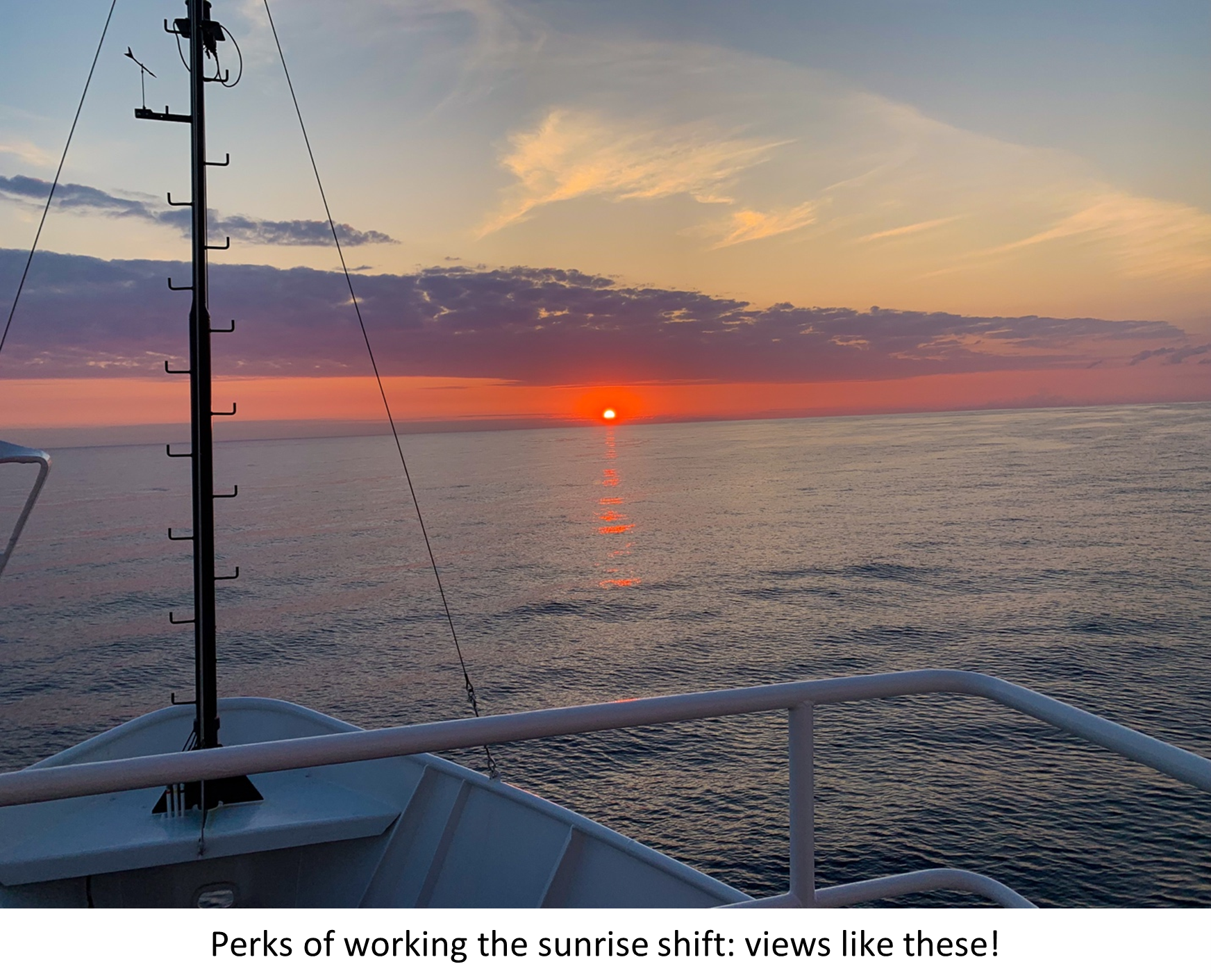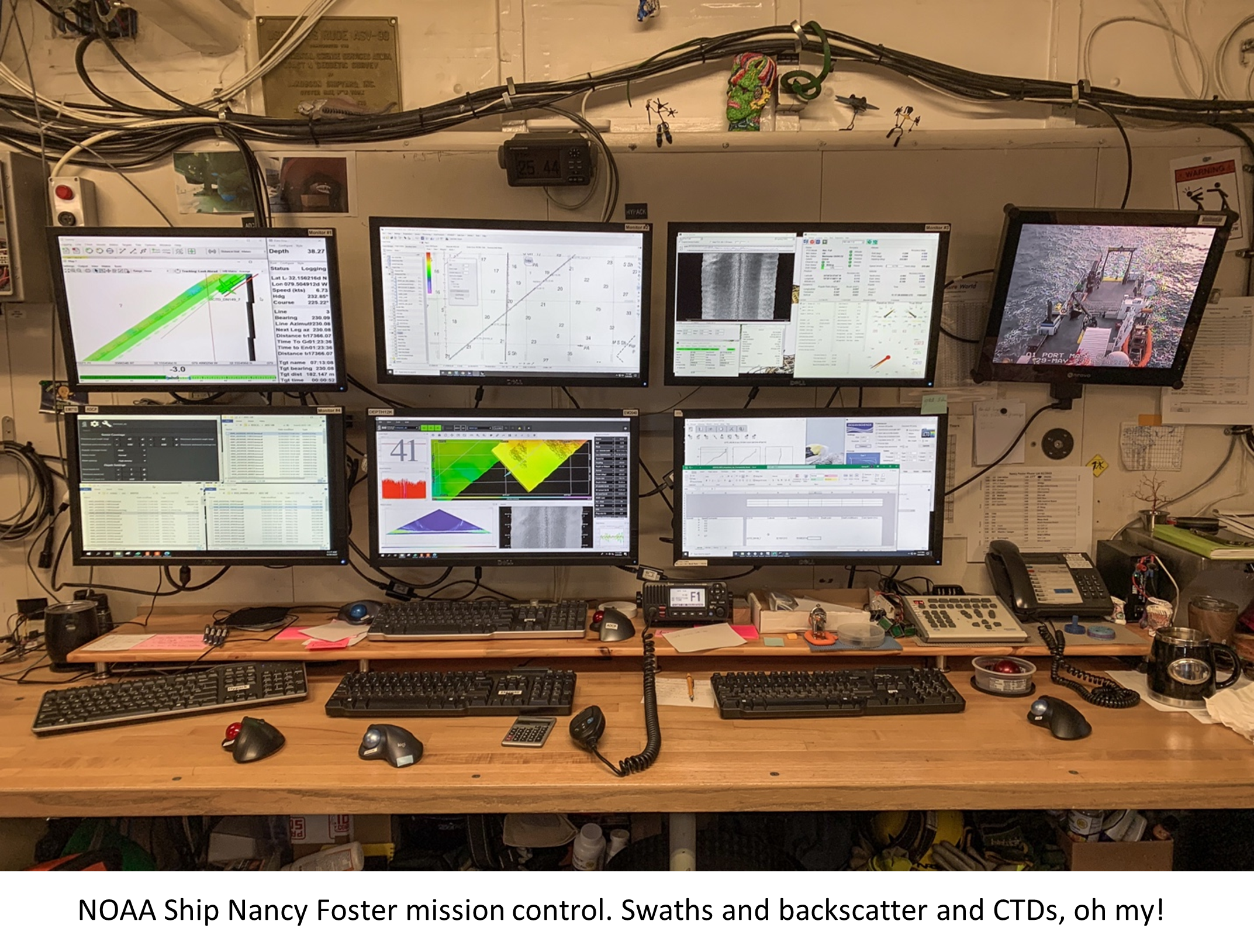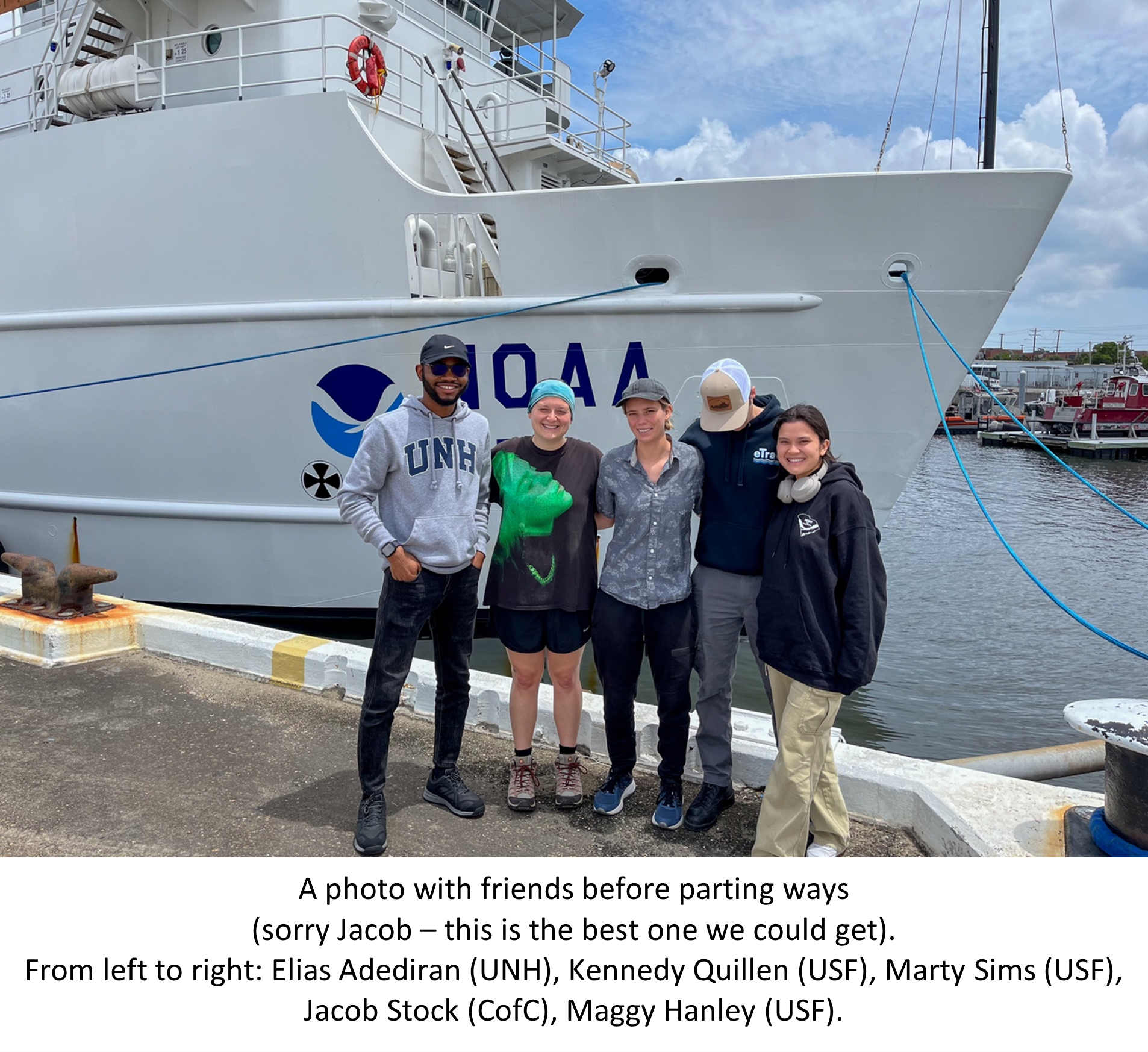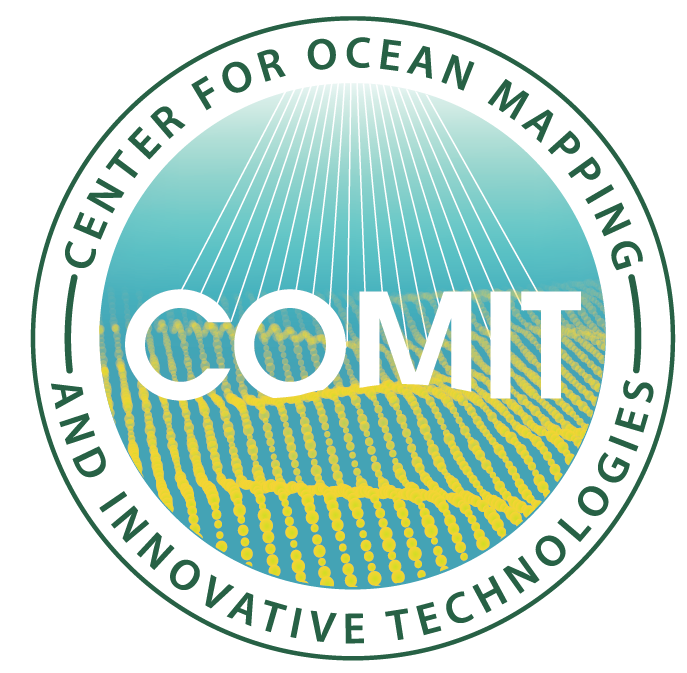Written by: Kennedy Quillen (PhD Student)
Hey there, fellow ocean enthusiasts! If you’re anything like me, you leap at the chance to escape the confines of the office and embark on an oceanic adventure – the mere thought of setting foot on a boat fills you with excitement. Usually, my adventures involve a scuba tank and a coral reef, but when a call for student volunteers to assist in seafloor mapping surveys on the Blake Plateau found its way into my email inbox, I couldn’t resist the opportunity to set sail.
The extent of my bathymetric mapping knowledge was a 15-minute presentation given by two of my classmates in Geological Oceanography only a few weeks before setting sail, so you might wonder what I was thinking lending myself to a team of hydrographers for 7 days aboard the NOAA Ship Nancy Foster (one of the coolest vessels in the NOAA fleet!). I’d be lying if I said I hadn’t wondered that myself, but the chance to gain this invaluable field experience, diversify my skills, and learn from some of the nation’s top scientists – even if those scientists didn’t study coral reefs – was too good to pass up. Did I mention this was my first research cruise (what could go wrong?!)?
Life aboard Nancy was not without its challenges. Sleeping on a bunk bed like I was back at summer camp, setting my alarm for 3:30 AM to make it to the 4 AM shift on time, and adding Dramamine to my daily vitamins took some getting used to. Showering was a whole other ordeal. Imagine a game of pinball. Really imagine it. Now, imagine the machine is a shower, and you are the ball. That about sums it up. If you ever find yourself in a similar situation, I highly recommend a nice pair of shower shoes with some grip (shoutout to my yellow Crocs!). Luckily, as time went on, Nancy’s quirks became more familiar, and we first-timers on board started to find humor in the struggle (cue High School Musical’s We’re All in This Together).
Data collection started bright and early (well, not bright but early) on the first day away from port. As luck would have it, I was assigned the 4 AM work shift. Ask any of my friends or family, and they will tell you I am NOT a morning person. Alarms don’t ring before 10 AM, and breakfast isn’t served before 11 AM. So, at first, I was apprehensive about my assignment, but I quickly realized it was the best shift in the rotation. Those working from 4 PM to midnight might disagree but climbing up to the bridge each morning to watch the sun peek out over the horizon made all the early mornings worth it. Trust me (or see for yourself!). I’m a West Virginia mountains girl through and through, so I know a good sunrise when I see one. On the next cruise, I’m ‘volunteering as tribute’ for the sunrise shift.

Much like the hydrography of Blake Plateau, the science on this cruise was, to me, uncharted territory. My background in ocean geology was slight, let alone the intricacies of bathymetric mapping. However, this opportunity meant I would constantly be in close proximity to NOAA hydrographers – so I dove in headfirst. The teachings started slow as I became familiar with the tools and techniques of ocean mapping. First, I learned the Nancy Foster is equipped with multibeam sonar technology. Simply put, these devices emit sound waves, which travel down into the water column until they are met by some physical feature – a rock or a shipwreck, for example – and are then reflected to the surface where they are received by transducers. By recording the amount of time required for a given wave to travel down to the bottom and back up to a transducer, the ‘two-way travel time,’ and by knowing the speed of sound in water, we can effectively calculate the distance between the ship and the seafloor or some other obstacle (cool right?!). Over the next week, we followed several meticulously determined transect lines, and slowly but surely the Blake Plateau revealed itself (and I hear this can be done for corals, too!).
Of course, our task was not as simple as letting the sonar run and watching a map unfold. At any one time, there were as many as 7-10 monitors in front of us displaying various data and real-time information. Remember when I said I’m a diver (*panics in hand signals*)? The screens were intimidating at first, but with each passing day, my confidence grew. The crew and fellow scientists aboard the RV Nancy Foster were incredibly patient and supportive, taking the time to explain to me the technology and software and the ins and outs of seafloor mapping, geologic formations, and hydrological processes. Not only did they make sure I understood the theory and processes, but also encouraged my active participation in the work. By my final shift, I could confidently (for the most part) interpret the data, identify anomalies, and filter out any unwanted signals. I was amazed at my progress in such a brief time, and I left feeling excited about the knowledge I had gained.

While the science was cool, some of my favorite time spent on board was with the friends I made along the way. Whether it be battling it out over Trivial Pursuit in the lounge (note to self: polar bears live in the north), watching the Twilight Saga in the theater room, or decoding the fancy espresso machine in the mess hall (which may or may not have taken us 3 days), these moments formed lasting memories that I’ll cherish for a lifetime. When the cruise ended, I returned to USF with a newfound appreciation for geology and hydrography, confident in my ability to approach scientific questions through a more holistic lens. On the NOAA Ship Nancy Foster, I navigated uncharted waters (pun intended) and exponentially broadened my understanding of the marine sciences. I am grateful to COMIT and the College of Marine Science for granting me this incredible opportunity to step outside my comfort zone and expand my appreciation of the wonders beneath the ocean surface. It has left me feeling as excited as ever to get back to work (but is it really ‘work’?) and continue to explore the unknown.


Recent Comments